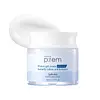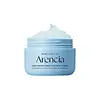What's inside
What's inside
 Key Ingredients
Key Ingredients

No key ingredients
 Benefits
Benefits

 Ingredients Side-by-side
Ingredients Side-by-side

Opuntia Ficus-Indica Stem Extract
Skin ConditioningButylene Glycol
HumectantGlycerin
Humectant1,2-Hexanediol
Skin ConditioningHydrogenated Polydecene
EmollientPanthenol
Skin ConditioningHydroxypropyltrimonium Hyaluronate
Glyceryl Glucoside
HumectantBeta-Sitosterol
Emulsion StabilisingWater
Skin ConditioningCetearyl Olivate
Sorbitan Olivate
EmulsifyingCarbomer
Emulsion StabilisingTromethamine
BufferingSodium Polyacryloyldimethyl Taurate
Emulsion StabilisingSimmondsia Chinensis Seed Oil
EmollientEthylhexylglycerin
Skin ConditioningDisodium EDTA
Polyglyceryl-10 Stearate
Skin ConditioningTrideceth-10
CleansingHydrogenated Lecithin
EmulsifyingOpuntia Ficus-Indica Stem Extract, Butylene Glycol, Glycerin, 1,2-Hexanediol, Hydrogenated Polydecene, Panthenol, Hydroxypropyltrimonium Hyaluronate, Glyceryl Glucoside, Beta-Sitosterol, Water, Cetearyl Olivate, Sorbitan Olivate, Carbomer, Tromethamine, Sodium Polyacryloyldimethyl Taurate, Simmondsia Chinensis Seed Oil, Ethylhexylglycerin, Disodium EDTA, Polyglyceryl-10 Stearate, Trideceth-10, Hydrogenated Lecithin
Water
Skin ConditioningGlycerin
HumectantC18-21 Alkane
Solvent1,2-Hexanediol
Skin ConditioningNiacinamide
SmoothingSimmondsia Chinensis Seed Oil
EmollientPolyglyceryl-3 Methylglucose Distearate
EmulsifyingButylene Glycol
HumectantPanthenol
Skin ConditioningSodium Carbomer
Emulsion StabilisingHydroxyacetophenone
AntioxidantEthylhexylglycerin
Skin ConditioningAdenosine
Skin ConditioningTrisodium Ethylenediamine Disuccinate
Hydrogenated Lecithin
EmulsifyingCeramide NP
Skin ConditioningMalachite Extract
AntioxidantArginine
MaskingPEG-10 Rapeseed Sterol
CleansingSodium Hyaluronate
HumectantAloe Barbadensis Leaf Extract
EmollientDipropylene Glycol
HumectantOryza Sativa Extract
AbsorbentGlyceryl Stearate
EmollientGlycereth-20
HumectantCamellia Sinensis Leaf Extract
AntimicrobialOryza Sativa Lees Extract
Skin ConditioningAnthemis Nobilis Flower Extract
MaskingTocopherol
AntioxidantHydrolyzed Hyaluronic Acid
HumectantLactobacillus/Rice Ferment
Skin ConditioningCaprylyl Glycol
EmollientCentella Asiatica Extract
CleansingSodium Dna
Skin ConditioningSodium Acetylated Hyaluronate
HumectantDisodium EDTA
Tripeptide-1
Skin ConditioningAcetyl Hexapeptide-8
HumectantCopper Tripeptide-1
Skin ConditioningPalmitoyl Pentapeptide-4
Skin ConditioningHexapeptide-9
Skin ConditioningBromelain
Skin ConditioningOryzanol
Skin ConditioningPapain
Skin ConditioningProtease
ExfoliatingLipase
Skin ConditioningKojic Dipalmitate
EmollientWater, Glycerin, C18-21 Alkane, 1,2-Hexanediol, Niacinamide, Simmondsia Chinensis Seed Oil, Polyglyceryl-3 Methylglucose Distearate, Butylene Glycol, Panthenol, Sodium Carbomer, Hydroxyacetophenone, Ethylhexylglycerin, Adenosine, Trisodium Ethylenediamine Disuccinate, Hydrogenated Lecithin, Ceramide NP, Malachite Extract, Arginine, PEG-10 Rapeseed Sterol, Sodium Hyaluronate, Aloe Barbadensis Leaf Extract, Dipropylene Glycol, Oryza Sativa Extract, Glyceryl Stearate, Glycereth-20, Camellia Sinensis Leaf Extract, Oryza Sativa Lees Extract, Anthemis Nobilis Flower Extract, Tocopherol, Hydrolyzed Hyaluronic Acid, Lactobacillus/Rice Ferment, Caprylyl Glycol, Centella Asiatica Extract, Sodium Dna, Sodium Acetylated Hyaluronate, Disodium EDTA, Tripeptide-1, Acetyl Hexapeptide-8, Copper Tripeptide-1, Palmitoyl Pentapeptide-4, Hexapeptide-9, Bromelain, Oryzanol, Papain, Protease, Lipase, Kojic Dipalmitate
 Reviews
Reviews

Ingredients Explained
These ingredients are found in both products.
Ingredients higher up in an ingredient list are typically present in a larger amount.
1,2-Hexanediol is a synthetic liquid and another multi-functional powerhouse.
It is a:
- Humectant, drawing moisture into the skin
- Emollient, helping to soften skin
- Solvent, dispersing and stabilizing formulas
- Preservative booster, enhancing the antimicrobial activity of other preservatives
Butylene Glycol (or BG) is used within cosmetic products for a few different reasons:
Overall, Butylene Glycol is a safe and well-rounded ingredient that works well with other ingredients.
Though this ingredient works well with most skin types, some people with sensitive skin may experience a reaction such as allergic rashes, closed comedones, or itchiness.
Learn more about Butylene GlycolDisodium EDTA plays a role in making products more stable by aiding other preservatives.
It is a chelating agent, meaning it neutralizes metal ions that may be found in a product.
Disodium EDTA is a salt of edetic acid and is found to be safe in cosmetic ingredients.
Learn more about Disodium EDTAEthylhexylglycerin (we can't pronounce this either) is commonly used as a preservative and skin softener. It is derived from glyceryl.
You might see Ethylhexylglycerin often paired with other preservatives such as phenoxyethanol. Ethylhexylglycerin has been found to increase the effectiveness of these other preservatives.
Glycerin is already naturally found in your skin. It helps moisturize and protect your skin.
A study from 2016 found glycerin to be more effective as a humectant than AHAs and hyaluronic acid.
As a humectant, it helps the skin stay hydrated by pulling moisture to your skin. The low molecular weight of glycerin allows it to pull moisture into the deeper layers of your skin.
Hydrated skin improves your skin barrier; Your skin barrier helps protect against irritants and bacteria.
Glycerin has also been found to have antimicrobial and antiviral properties. Due to these properties, glycerin is often used in wound and burn treatments.
In cosmetics, glycerin is usually derived from plants such as soybean or palm. However, it can also be sourced from animals, such as tallow or animal fat.
This ingredient is organic, colorless, odorless, and non-toxic.
Glycerin is the name for this ingredient in American English. British English uses Glycerol/Glycerine.
Learn more about GlycerinHydrogenated Lecithin is created from the hydrogenation of lecithin (a group of phospholipids). Hydrogenation is a chemical reaction between hydrogen and another element.
This ingredient is an emollient and emulsifier. As an emollient, it helps soften skin by trapping moisture within. As an emulsifier, it prevents oil and water ingredients from separating.
Panthenol is a common ingredient that helps hydrate and soothe the skin. It is found naturally in our skin and hair.
There are two forms of panthenol: D and L.
D-panthenol is also known as dexpanthenol. Most cosmetics use dexpanthenol or a mixture of D and L-panthenol.
Panthenol is famous due to its ability to go deeper into the skin's layers. Using this ingredient has numerous pros (and no cons):
Like hyaluronic acid, panthenol is a humectant. Humectants are able to bind and hold large amounts of water to keep skin hydrated.
This ingredient works well for wound healing. It works by increasing tissue in the wound and helps close open wounds.
Once oxidized, panthenol converts to pantothenic acid. Panthothenic acid is found in all living cells.
This ingredient is also referred to as pro-vitamin B5.
Learn more about PanthenolThis oil comes from the seeds of the desert shrub called Jojoba. It is more commonly known as jojoba oil, a non-comedogenic oil.
Jojoba oil does not contain fragrance and has many fatty-acids, making it a great soothing ingredient.
It also contains Vitamin E, a great moisturizing ingredient. Vitamin E is also an antioxidant and protects your skin against oxidative damage.
This ingredient humectant properties, meaning it helps draw moisture from the air. This helps keep your skin hydrated.
While jojoba has antibacterial properties, it is only able to kill some strains of bacteria.
Studies also show it helps in wound healing. In fact, Indigenous cultures have used jojoba as a moisturizer and to help treat burns for centuries.
Fun fact: Jojoba oil similar to natural human skin sebum, so it has a great effect on dry skin. It is also promising with helping to regulate sebum production.
Due to its fatty acid content, Jojoba oil may not be fungal acne safe. We recommend speaking with a professional if you have any concerns.
Learn more about Simmondsia Chinensis Seed OilWater. It's the most common cosmetic ingredient of all. You'll usually see it at the top of ingredient lists, meaning that it makes up the largest part of the product.
So why is it so popular? Water most often acts as a solvent - this means that it helps dissolve other ingredients into the formulation.
You'll also recognize water as that liquid we all need to stay alive. If you see this, drink a glass of water. Stay hydrated!
Learn more about Water